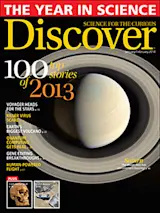In 2013, crack squads of virus detectives zeroed in on the source of a deadly new virus — and where the killer might be headed next — with unprecedented speed.
Assailant: The coronavirus Middle East Respiratory Syndrome, also known as MERS-CoV.
Rap sheet: No known priors; the virus is new to humans, who have no acquired immunity to it.
Ivan Pavlov/Shutterstock
Bats: Using a sophisticated sequencing and analysis technique, researchers in late August found the first exact genetic match for MERS-CoV in an Egyptian tomb bat near the home of the first human victim.
Camels: Following a lead that some early MERS victims were in contact with camels, researchers tested 50 of the animals from nearby Oman: All had antibodies showing previous exposure to MERS, according to another study published in August. Camels, widely used in the region for milk, meat, transport and racing, may be an intermediary host for ...















